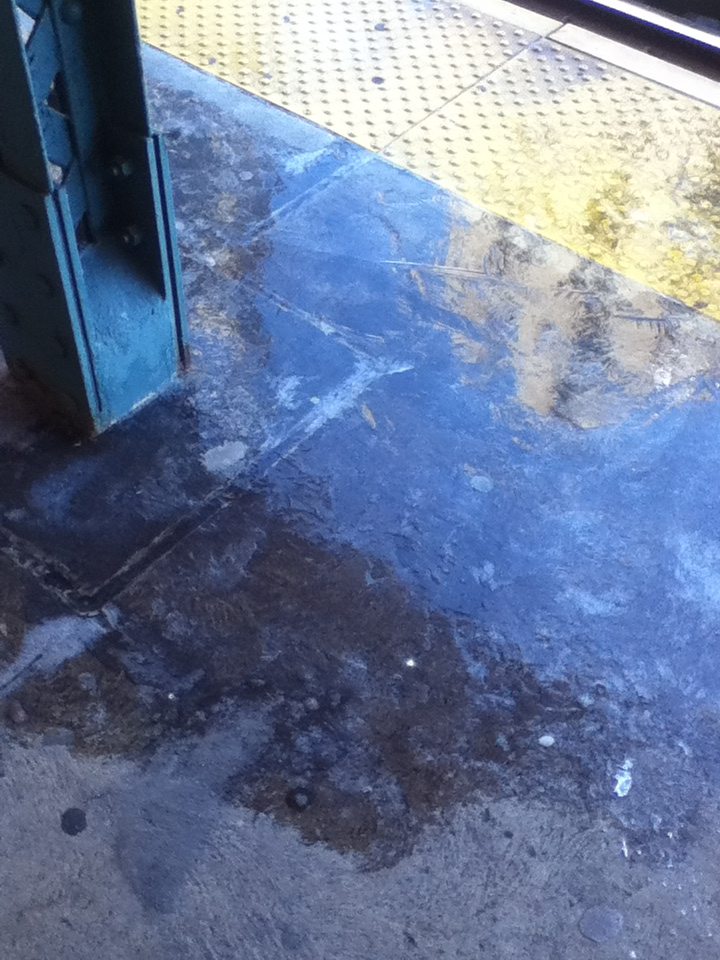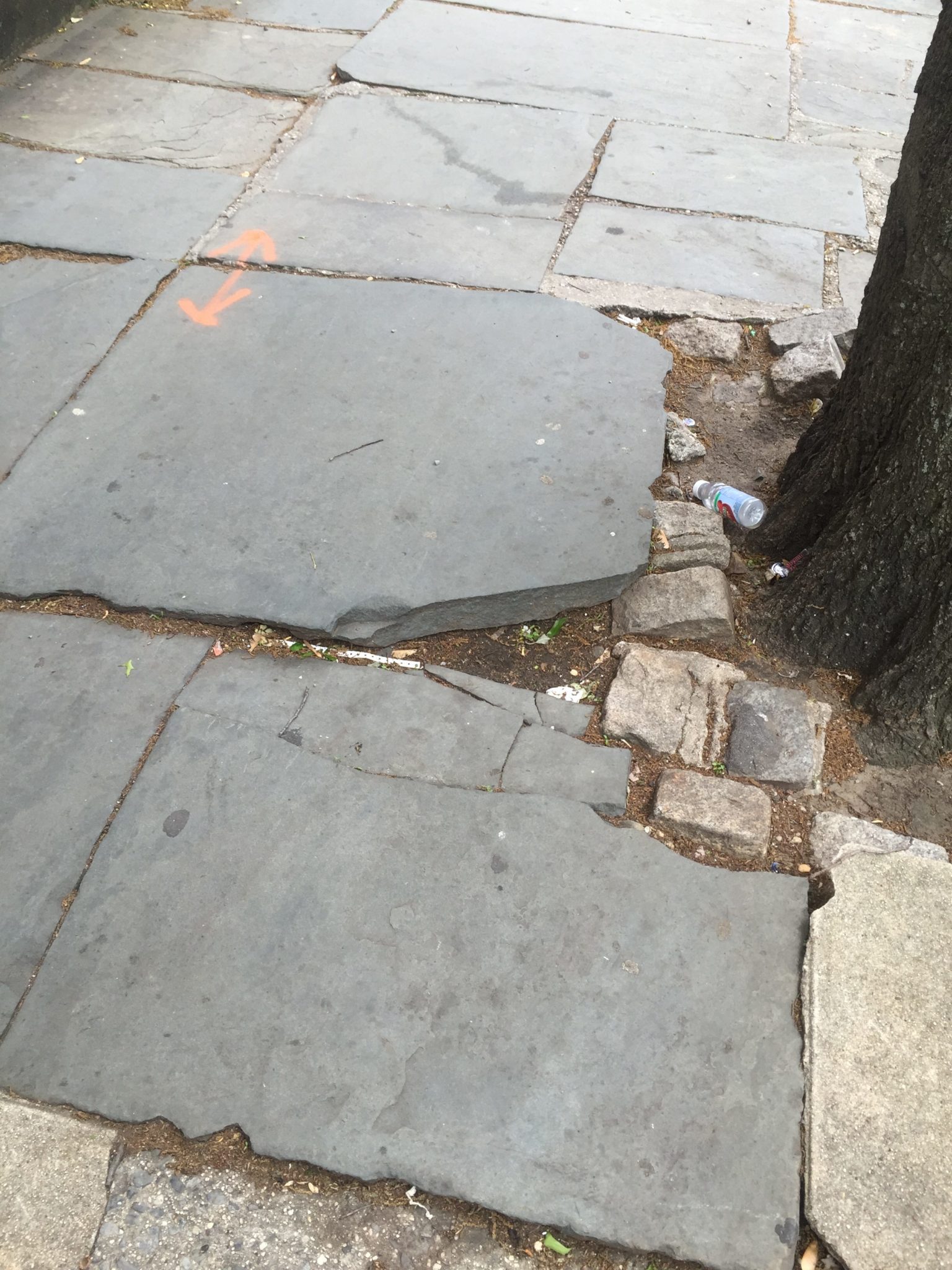Premises Liability Accident Lawyer in New York City
Broken or cracked sidewalks and curbs, ice, faulty lighting, liquid on a shop’s floor, tools or materials on a construction site, broken stairs in an apartment building or subway, and improper caution or warning signs are common examples of defective conditions that can cause people to fall and seriously injure themselves.
Lawsuits due to defective condition are a branch of personal injury law called “Premises Liability”. In other words, owners of property, and their employees and contractors, are required by law to keep and maintain their Premises in a safe condition.
For 30 years, The Dearie Law Firm, P.C., has represented hundreds of people who have been seriously injured as a result of falling on the premises of other parties. As explained below, if you or someone you know has been injured in a fall, it is incredibly important to speak to a New York premises liability lawyer as soon as possible. There are many variables and factors that can determine the outcome of a Premises Liability claim. The sooner after an accident those variables are examined and evaluated by one of the experienced New York Premises Liability attorneys at The Dearie Law Firm, P.C., the better. Contact Us or call (212) 970-6500.
I’ve Been Injured Due to a Defective Condition – Now What?
As soon as you contact The Dearie Law Firm, P.C., our New York City slip, trip and fall accident lawyers and investigators will visit the site of the incident to conduct a detailed investigation. However, there are ways that you can help the investigation and the premises liability claims process even before contacting The Dearie Law Firm, P.C. Below are a few important actions to consider taking immediately after your trip/slip and fall.
Identify the Defective Condition that Caused Your Injury
The first thing that you should do after experiencing a premises injury accident due to a Defective Condition is to specifically identify what caused you to fall. Under New York State law, if an injured party cannot specifically identify the Defective Condition that caused their injuries, there can be no lawsuit. That means you must identify where the Defective Condition was and what part of the Defective Condition caused your fall.
For example, if you fell as a result of a broken step, you should identify the following:
- The address of the accident location (building address, subway station address, etc.);
- Which stairway you were on and what part of the stairway (ex: Stairway B between the 2nd and 3rd floors);
- Which step was defective (ex: 5th step below the 3rd floor landing);
- How the step was defective (ex: the nose of the step was missing, there was liquid on the step, etc.);
- What part of the step caused your slip or trip (ex: the right side of the step as I was walking down the stairway);
- Which foot was caused to slip or trip (ex: I stepped with my right foot on the broken stair).
If you slipped or tripped on a sidewalk, it is also extremely important to identify the address of the building adjacent to (in front of) that part of the sidewalk. This is particularly important if your accident happened within New York City, because City law assigns responsibility for maintaining safe sidewalks to the landowner of the adjacent property.
NOTE: Before 2003, the City of New York was responsible for the maintenance and repair of all sidewalks within the City. In 2003, however, New York City Administrative Code §7-210 was passed, which transferred responsibility for sidewalk maintenance from the City to the adjacent landowner. The exception to §7-210 is in the case of a one-, two-, or three-family home. If the adjacent property is a one-, two- or three- family home, the City of New York is still responsible for maintenance of the sidewalk.
Take Photographs
Take photographs of the Defective Condition and the accident location as soon as possible after your trip/slip and fall. Once you contact The Dearie Law Firm, P.C., our New York premises liability accident lawyers and investigators will visit your accident site right away. But conditions can change quickly, and so taking photographs, ideally immediately after your fall, is very important.
Take several photographs of the Defective Condition itself, both up close and from a distance, to give perspective. For example, photograph the cracked sidewalk, the patch of ice, the broken step (whatever Defective Condition caused your fall) from two inches, six inches, one foot, three feet, six feet, 10 feet, etc.
If you fell on a New York City Transit Authority (“NYCTA”) subway stairway, there is a white tag on the front of a step (often in the middle of the stairway) on every NYCTA stairway. The tag displays a combination of letters and numbers (ex: O1a, P3, etc.). Each stairway in every NYCTA station has a separate code. Take photographs of the tag identifying the stairway on which you fell.
If you fell on the sidewalk, also take pictures of the adjacent property. Take pictures of the entire building, the address posted on front of the building, the name of the business if it is a commercial property, etc.
Take as many pictures as possible. If you cannot take pictures at the time of the accident because of your injuries, return to the accident scene as soon as possible thereafter to take pictures.

Notice
In most Premises Liability claims, we (as Plaintiffs) must be able to show that the Defendant property owner had Notice of the Defective Condition. In other words, it must be shown that the Defendant knew, or should have known, about the Defective Condition before you were injured. This is because New York State law does not hold Premises owners responsible for Defective Conditions about which they did not know.
There are two types of Notice: Actual Notice and Constructive Notice.
In order to prove Actual Notice, we must show that the Defendant knew specifically about this Defective Condition. For example: the Transit Authority, before your accident happened, knew that the second step from the bottom of Stairway P3 in the West 4th Street subway station was broken, and they did not fix it.
It is often difficult to prove that a Premises owner had Actual Notice of the exact Defective Condition that caused your premises liability injuries. As a result, Premises Liability lawsuits frequently rely on the alternative method to show Notice…Constructive Notice. In order to demonstrate Constructive Notice, it must be proven that the Defective Condition was visible, apparent and existed for a sufficient length of time prior to the accident to permit the Defendant to discover it and take corrective action.
After your accident, therefore, it is important for you, if possible, to find out if the Premises owner had Notice of the Defective Condition that caused your injuries.
For example, if you fell on a broken step in your apartment building:
- Had you seen this broken step before your accident?
- Did you write a letter or email to the building owner or building manager about the broken step?
- Did you make a verbal complaint to the building owner or building manager about the broken step? When? Where? To whom did you speak? What did they say?
- Do you know of any other building residents who made complaints before your accident about the broken step? What are their names?
- Do you know of anyone else who fell on this broken step before your accident? Who? When?
Get Witness Information
Often times when someone falls and is injured, the person was alone and there was no one around who observed the fall.
But if there were any witnesses to your fall, if possible, it is important that you get their name, phone number, email address, and any other identifying information that you can obtain. Witnesses include anyone who actually saw you fall, as well as anyone who saw you after the fall and helped you in any way, like by calling 911 or helping you get up.
Of course, when someone is injured due to a fall, they are often not thinking about taking down names and phone numbers. But if you can, having witness testimony to verify your account of the fall and the events immediately thereafter can be very helpful.

How long after my accident must a Premises Liability lawsuit be commenced?
The maximum time after an event in which a lawsuit must be commenced is called the Statute of Limitations. The purpose of Statute of Limitations laws is to ensure that evidence (physical evidence and witness memory) does not deteriorate to such an extent that holding someone liable, based upon that evidence, would be unjust.
There are different Statute of Limitation times depending on the type of lawsuit.
In a Premises Liability lawsuit, the Statute of Limitations depends upon the Defendant.
If it is a Private Defendant (e.g., an individual, business, LLC, corporation, etc.), the Statute of Limitations is THREE (3) YEARS from the date of your accident. So within 3 years from your accident date, the private Defendant must be served with the Summons and Complaint.
The Statute of Limitations is different if any Defendant is a municipality. A municipality is any governmental agency (ex: The City of New York, Westchester County Parks Department, NYC Transit Authority, City of Buffalo, etc.). If it is a Municipal/Governmental Defendant, that entity must be served with a Notice of Claim within 90 days from the date of the accident. A Notice of Claim is a legal document that notifies the governmental entity that someone was injured and that a lawsuit may be forthcoming.
The experienced New York Premises Liability attorneys at The Dearie Law Firm, P.C., will litigate your Premises Liability case to the best of their ability. But taking these steps on your own, as soon as possible after your accident, will greatly benefit your lawsuit in the future.
To speak to one of the New York personal injury lawyers at The Dearie Law Firm, P.C., regarding a Premises Liability case, Contact Us or call (212) 970-6500. Over the years we have helped many clients obtain compensation for their premises liability injury accidents.
